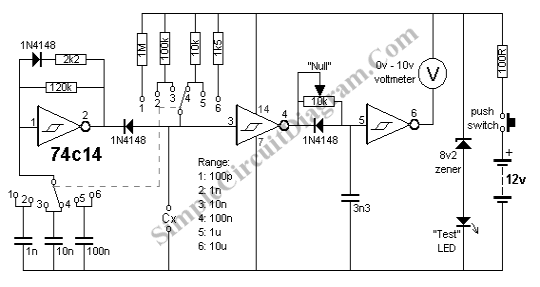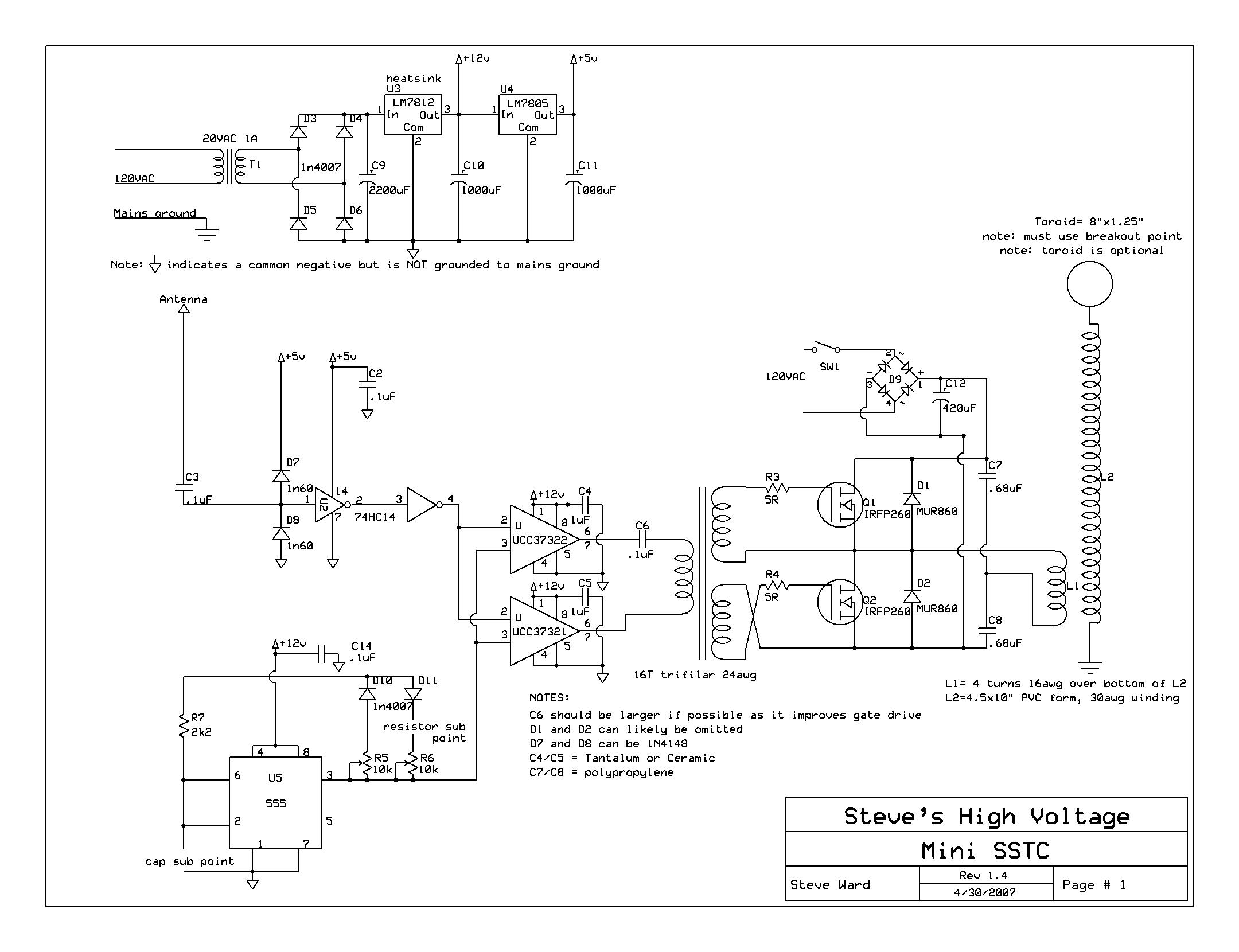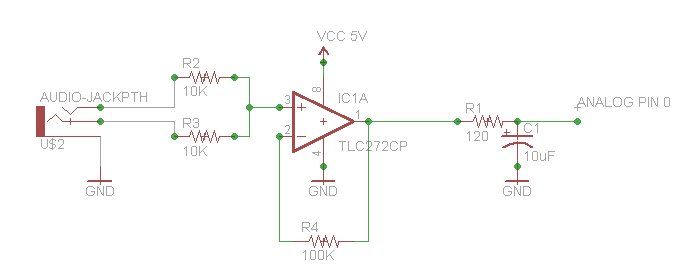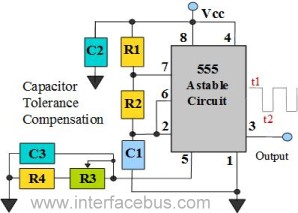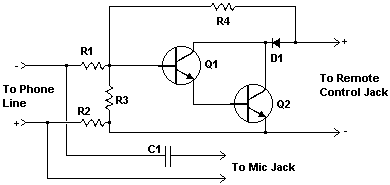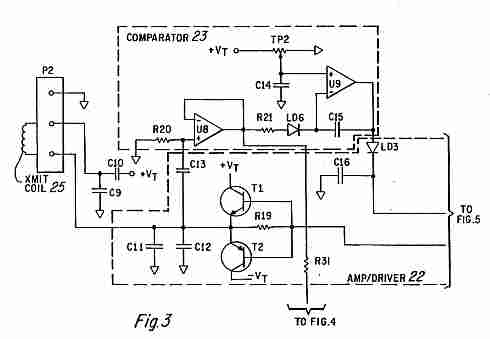
555 IC using a delay circuit ter
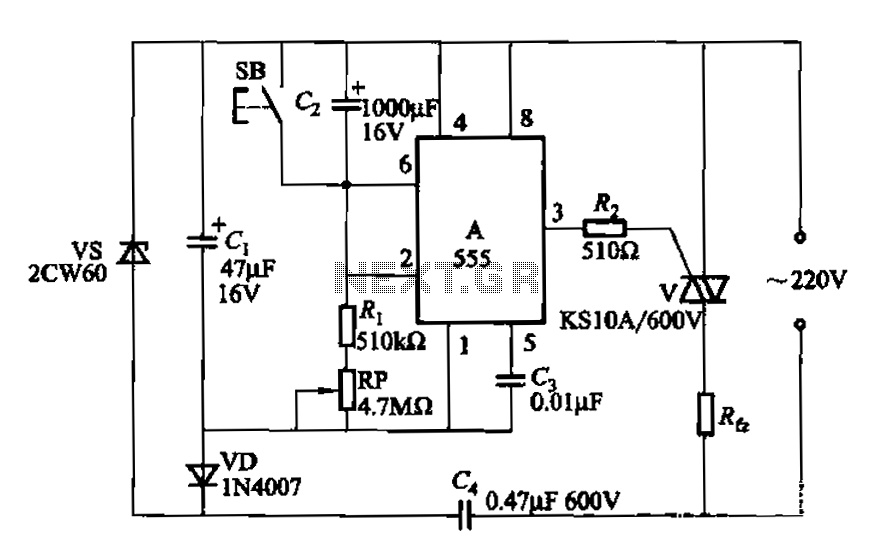
The circuit utilizes a 555 Integrated Circuit (IC) configured as a delay circuit. It transitions from a low to a high state after a button (SB) is pressed, initiating a delay before the output terminal goes high. The output remains high until the circuit is shut down. The delay time can be adjusted by varying the potentiometer (R). The load connected to the circuit can be modified to include a relay or contactor, which can control larger loads through their contacts.
The 555 timer IC is a versatile component widely used in timing applications. In this configuration, the 555 timer operates in monostable mode, where it generates a single output pulse in response to a trigger input. When the button SB is pressed, it triggers the timer, initiating the timing cycle. The timing duration is determined by the resistor (R) and a capacitor (C) connected to the 555 timer, following the formula:
\[ T = 1.1 \times R \times C \]
Where T is the time delay before the output transitions to a high state. The potentiometer (R) allows for fine-tuning of the resistance, thus adjusting the time delay according to the application's requirements.
Upon the completion of the delay period, the output pin (usually pin 3 of the 555 IC) goes high, providing a voltage signal that can be used to drive a load. This load can be a relay or contactor, which are electromechanical devices that can switch larger currents and voltages than the 555 timer can handle directly. By connecting the relay or contactor to the output pin, the circuit can effectively control high-power devices, such as motors or lighting systems, allowing for versatile applications in automation and control systems.
To ensure proper operation, it is essential to select the appropriate values for the resistor and capacitor to achieve the desired delay time. Additionally, the relay or contactor must be rated for the load it is intended to control, ensuring safe and reliable operation. The circuit can be powered using a DC supply suitable for the 555 timer, typically between 4.5V and 15V, depending on the specific requirements of the application.
Overall, this 555 timer-based delay circuit provides a simple yet effective solution for applications requiring a timed output signal, with the flexibility to control larger loads through the use of relays or contactors.555 IC using a delay circuit ter It is the transition from low to high delay circuit. Ie after pressing the button SB, after a delay after birth, the output terminal goes high and remain so until the shut down. Adjusting potentiometer R, you can change the delay time. Rfz load can be changed to relay or contactor, etc., and then by their contacts to control larger loads.
The 555 timer IC is a versatile component widely used in timing applications. In this configuration, the 555 timer operates in monostable mode, where it generates a single output pulse in response to a trigger input. When the button SB is pressed, it triggers the timer, initiating the timing cycle. The timing duration is determined by the resistor (R) and a capacitor (C) connected to the 555 timer, following the formula:
\[ T = 1.1 \times R \times C \]
Where T is the time delay before the output transitions to a high state. The potentiometer (R) allows for fine-tuning of the resistance, thus adjusting the time delay according to the application's requirements.
Upon the completion of the delay period, the output pin (usually pin 3 of the 555 IC) goes high, providing a voltage signal that can be used to drive a load. This load can be a relay or contactor, which are electromechanical devices that can switch larger currents and voltages than the 555 timer can handle directly. By connecting the relay or contactor to the output pin, the circuit can effectively control high-power devices, such as motors or lighting systems, allowing for versatile applications in automation and control systems.
To ensure proper operation, it is essential to select the appropriate values for the resistor and capacitor to achieve the desired delay time. Additionally, the relay or contactor must be rated for the load it is intended to control, ensuring safe and reliable operation. The circuit can be powered using a DC supply suitable for the 555 timer, typically between 4.5V and 15V, depending on the specific requirements of the application.
Overall, this 555 timer-based delay circuit provides a simple yet effective solution for applications requiring a timed output signal, with the flexibility to control larger loads through the use of relays or contactors.555 IC using a delay circuit ter It is the transition from low to high delay circuit. Ie after pressing the button SB, after a delay after birth, the output terminal goes high and remain so until the shut down. Adjusting potentiometer R, you can change the delay time. Rfz load can be changed to relay or contactor, etc., and then by their contacts to control larger loads.
